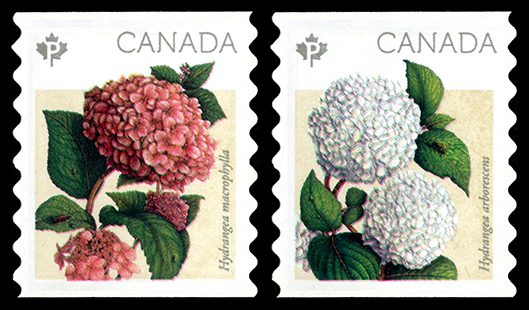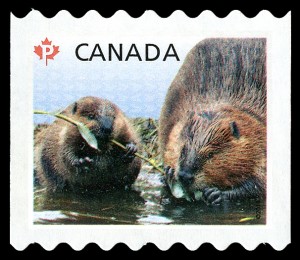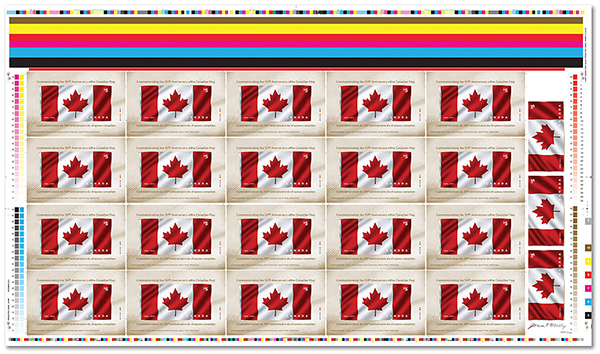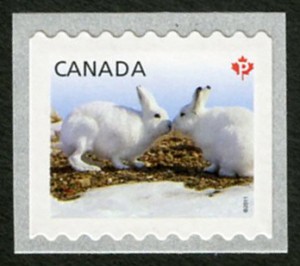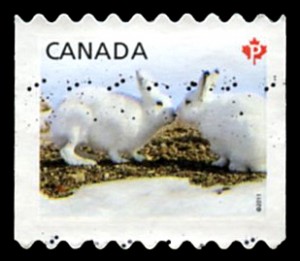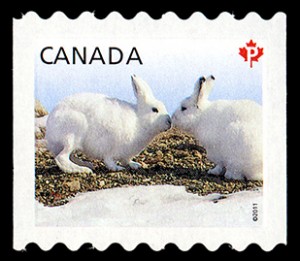Two stamp issues have appeared with counting numbers on the back of the coil rolls. The Hydrangeas coil issue of March 1, 2014 (rolls of 50 stamps), and the current Permanent™ Beaver definitive (rolls of 100 stamps, first issued March 31, 2014) have dot matrix-printed numbers placed every 5 stamps on the back of the rolls. The purpose is to give an indication to the user of the rolls just how many stamps are remaining in the roll. [An individual stamp removed from the backing paper does not show any number.]
As one gets closer to the end of the roll, a message in both English and French appears to let the person know it is time to think about purchasing more stamps.
The start of the roll has the highest number (50 on the Hydrangeas stamps, and 100 on the Beaver definitive). The “Need more?/Order at canadapost.ca/shop” text in English appears at stamp number 15 remaining, and the equivalent message in French appears at stamp number 10 remaining.
Here is the starter strip of the Permanent™ Beavers stamp (Scott 2711) that shows counting numbers 100 and 95.
Here are images, taken from the Hydrangeas stamps, of the counts at 50–45, 15–10, and 10 to the end of the roll where the remnants of the inner core tube are present (the end of the roll of stamps is glued to the inner core).
